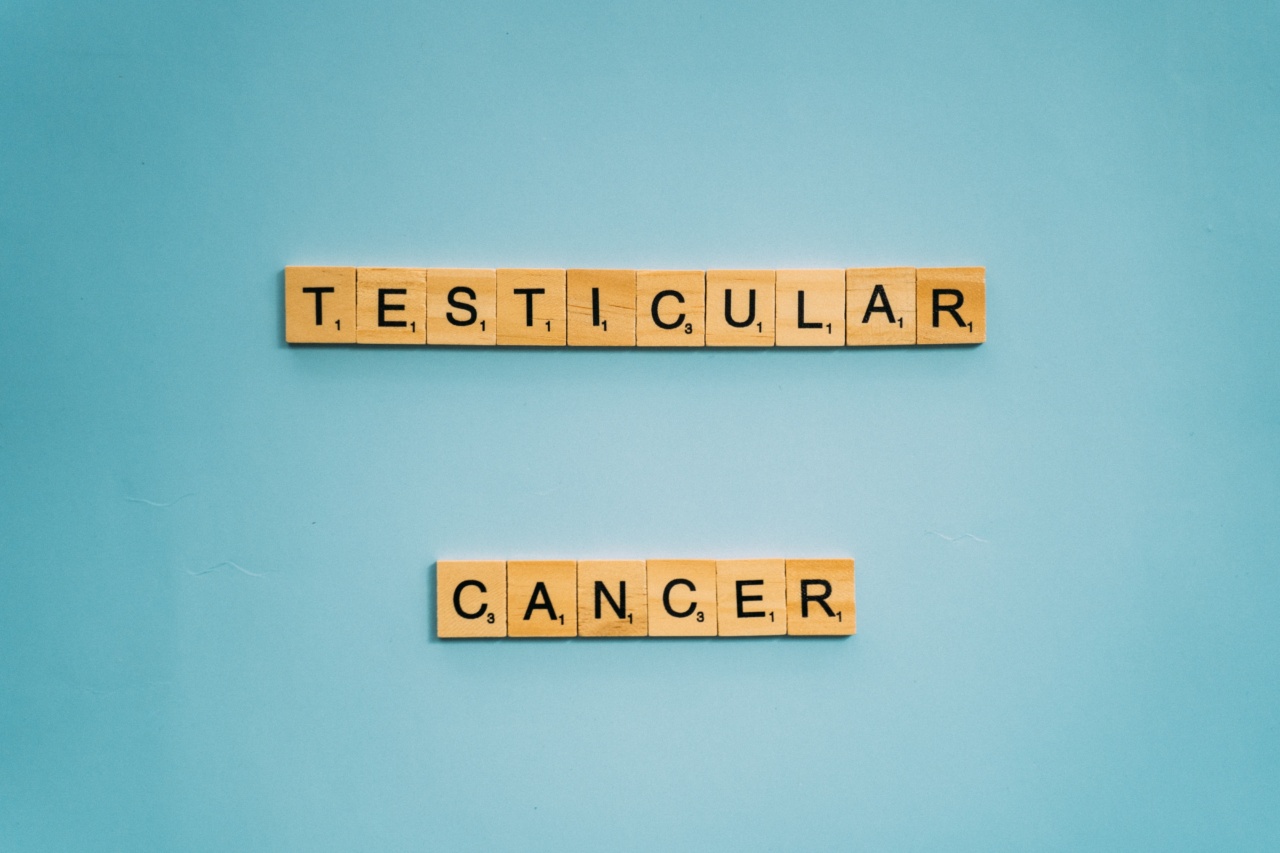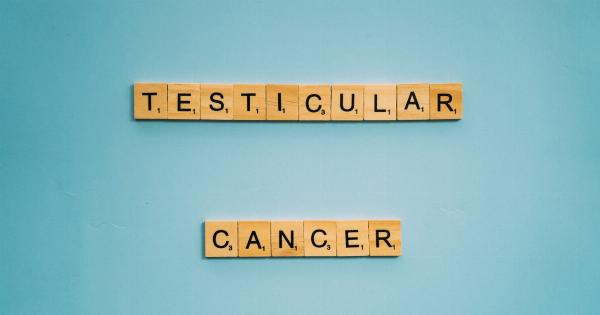Testicular cancer is a type of cancer that starts in the testicles or testes, which are responsible for the production of male sex hormones and sperm.
It is a rare disease that affects primarily young and middle-aged men (ages 15-35), and its incidence has been increasing steadily in many parts of the world over the last few decades. Although the exact causes of testicular cancer are not well understood, it is believed that both genetic and environmental factors play a role.
The genetic basis of testicular cancer
Several studies have shown that testicular cancer has a significant genetic component. In fact, it is estimated that up to 50% of the risk of developing the disease may be attributed to genetic factors.
This means that if someone in your family has had testicular cancer, your risk of getting it is higher than that of someone without a family history.
There are several genes that have been found to be associated with an increased risk of testicular cancer. The most well-known of these is the gene called BRCA2.
This gene is also associated with an increased risk of breast and ovarian cancer in women, as well as pancreatic cancer in both men and women.
Mutations in the BRCA2 gene have been found in a small percentage of men with testicular cancer, and these mutations appear to be inherited in an autosomal dominant pattern (meaning that only one copy of the mutated gene is necessary for increased risk).
Another gene that has been implicated in testicular cancer is the P53 gene. This gene encodes a protein that is responsible for regulating cell division and preventing the formation of tumors.
Mutations in the P53 gene can lead to a loss of this regulatory function, which in turn can result in the development of cancer. Mutations in the P53 gene have been found in a subset of men with testicular cancer, particularly those with seminoma (a type of testicular cancer that arises from germ cells).
Other genes that have been associated with an increased risk of testicular cancer include the KIT gene, which is involved in the development of germ cells, and the CYP17A1 gene, which is involved in the regulation of testosterone production. Variants in these genes have been found to be more common in men with testicular cancer than in the general population, although the exact mechanisms by which they increase risk are not well understood.
Environmental factors and testicular cancer
Although genetics plays a significant role in the development of testicular cancer, it is also clear that environmental factors contribute to the disease.
Several environmental factors have been identified that may increase the risk of testicular cancer, including:.
- Undescended testicles (cryptorchidism): Boys born with one or both testicles that did not descend into the scrotum are at increased risk of developing testicular cancer.
- Family history: As mentioned earlier, men with a family history of testicular cancer are at higher risk of developing the disease themselves.
- HIV infection: Men who have HIV or AIDS are at increased risk of developing testicular cancer, possibly because their immune systems are compromised.
- Exposure to certain chemicals: Exposure to certain chemicals, such as pesticides, herbicides, and industrial chemicals, has been linked to an increased risk of testicular cancer.
- Smoking: Men who smoke are at increased risk of developing testicular cancer, although the reasons for this are not well understood.
- Heavy alcohol use: Some studies have suggested that heavy alcohol use may increase the risk of testicular cancer, although the evidence is not conclusive.
Prevention and treatment of testicular cancer
Like many other forms of cancer, the best approach to testicular cancer is prevention and early detection. Men can take several steps to reduce their risk of developing the disease, including:.
- Performing regular self-exams of the testicles to look for any lumps or abnormalities. Early detection is critical for successful treatment of testicular cancer.
- Seeking medical attention if any abnormalities are noticed in the testicles, such as swelling, pain, or tenderness.
- Getting vaccinated against human papillomavirus (HPV), which has been linked to an increased risk of testicular cancer.
- Avoiding exposure to chemicals and toxins that have been linked to an increased risk of testicular cancer. This may include wearing protective clothing and equipment when working with potentially hazardous substances.
If testicular cancer is detected, treatment typically involves one or more of the following:.
- Surgery to remove the affected testicle (orchiectomy): This is the most common treatment for testicular cancer, and in many cases it is curative.
- Radiation therapy: Radiation may be used to kill cancer cells in the testicle and other parts of the body.
- Chemotherapy: Chemotherapy involves the use of drugs to kill cancer cells, and may be used in conjunction with surgery or radiation therapy.
- Watchful waiting: In some cases, men with early-stage testicular cancer may be monitored closely to see if the cancer grows or spreads before resorting to more aggressive treatment.
Conclusion
Testicular cancer is a rare but potentially serious disease that primarily affects young and middle-aged men.
Although the exact causes of the disease are not well understood, it is clear that both genetic and environmental factors contribute to its development. Approximately 50% of the risk of developing testicular cancer may be attributed to genetic factors, making it important for men with a family history of the disease to take steps to reduce their risk.
Regular self-exams and other preventive measures, such as avoiding exposure to chemicals and toxins, can also help to reduce the risk of developing testicular cancer.





























